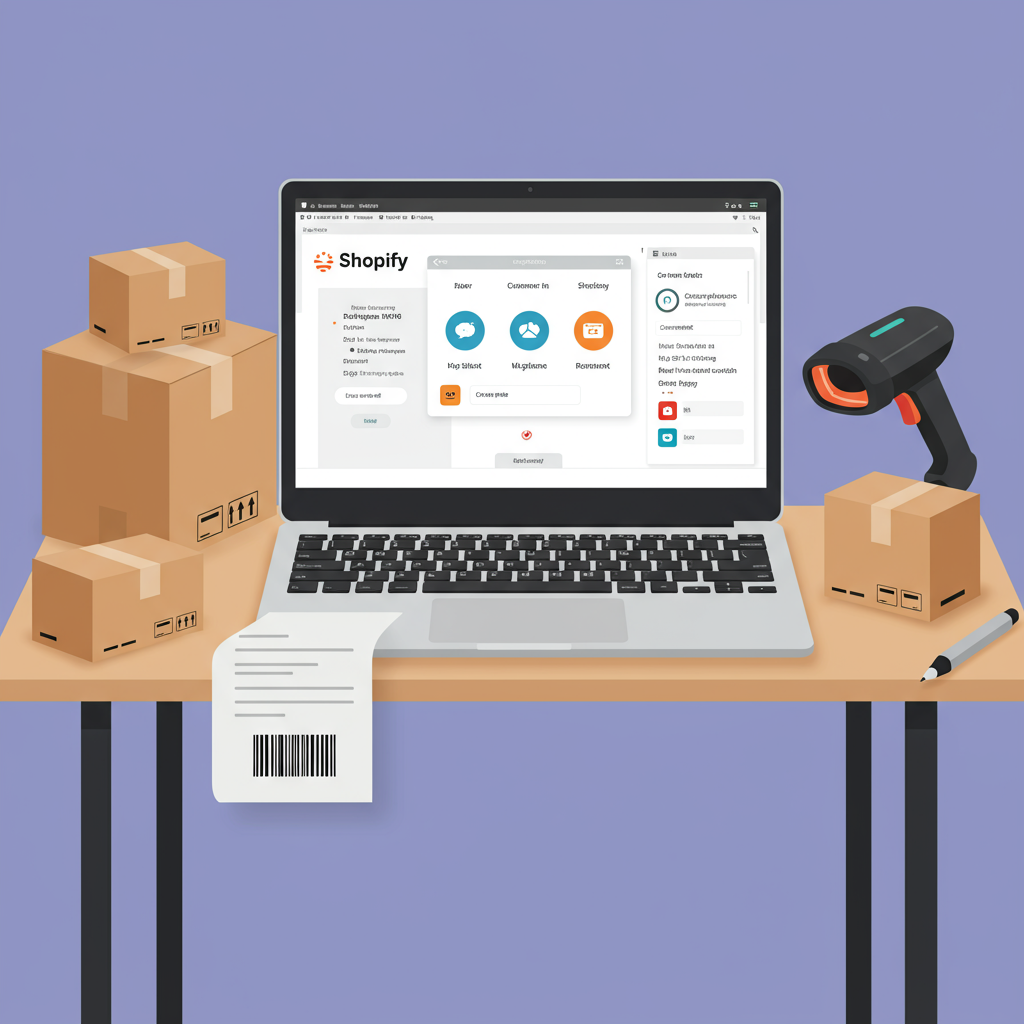My Journey to Efficient Inventory Control for E-commerce Success
As a Shopify merchant, I quickly learned that managing inventory isn’t just about counting products. It’s the backbone of your business, impacting everything from cash flow to customer satisfaction.
Initially, I tried to manage everything manually, using spreadsheets and a lot of guesswork. This quickly became a nightmare.
I faced constant stockouts, overselling issues, and wasted hours trying to reconcile discrepancies. It was a source of immense stress and lost revenue.
That’s when I realized the critical need for a robust inventory management solution. Shopify’s native inventory features are a good starting point, but for growing businesses, they often fall short.
They lack advanced features like multi-location tracking, detailed reporting, or automated reordering, which are essential as your product catalog and sales volume expand.
So, I embarked on a mission to explore the best inventory management apps available on the Shopify App Store. My goal was to find tools that could streamline operations, prevent errors, and free up my time.
What I discovered was a diverse ecosystem of apps, each with its unique strengths, catering to different business sizes and complexities.
When evaluating these apps, I focused on several key features that I believe are absolutely essential for any serious merchant looking to scale efficiently.
First, real-time syncing across all sales channels is non-negotiable. You need accurate stock levels instantly, whether a sale happens on your Shopify store, a marketplace, or in a physical retail location.
Multi-location support was crucial for me, as I store products in different warehouses, fulfillment centers, and even a small retail storefront. Managing stock across these locations manually is impossible.
The ability to handle product bundling and kitting is also vital if you sell items in combinations or create gift sets. This ensures components are tracked correctly and bundles are always in stock.
Robust purchase order management helps you track incoming stock, manage supplier relationships effectively, and forecast future inventory needs based on sales data.
Comprehensive reporting and analytics provide invaluable insights into sales trends, popular products, slow-movers, and overall inventory health. This data drives smarter purchasing decisions.
Automation features, like low-stock alerts and automated reordering suggestions, save immense time and prevent costly stockouts or overstocking.
Seamless integrations with other tools like POS systems, accounting software (e.g., QuickBooks, Xero), and shipping carriers are also a huge plus, creating a unified operational ecosystem.
User-friendliness and a clear, intuitive interface are important; you don’t want to spend hours learning complex software or training your team.
Finally, scalability is key. The app should grow with your business, not become a bottleneck as you expand your product lines or sales volume.
Let me share some of the apps I explored and my thoughts on them, highlighting their specific strengths and ideal use cases.
**Stock Sync** was one of the first I tried. It’s excellent for basic inventory syncing, especially if you deal with multiple suppliers, dropshippers, or need to update product feeds across various platforms.
It’s straightforward, effective for keeping your product feeds updated, and handles large data imports and exports with ease.
For more complex operations, particularly if you’re involved in manufacturing or assembling products, **Katana MRP** stood out as a powerful solution.
Katana offers detailed production planning, raw material tracking, shop floor control, and even integrates with accounting software, going far beyond basic inventory management.
Then there’s **QuickBooks Commerce (formerly TradeGecko)**. This is a comprehensive solution for businesses with B2B and wholesale components, or those needing advanced multi-channel capabilities.
It handles everything from inventory and order management to CRM and B2B e-commerce portals, making it a true all-in-one platform for growing brands.
For merchants with a strong focus on warehouse operations, pick-pack-ship workflows, and barcode scanning, **SKULabs** is a powerful contender.
It excels in optimizing fulfillment processes, reducing picking errors, and providing real-time visibility into warehouse activities.
Choosing the right app really depends on your specific business needs, the complexity of your operations, and your budget. There’s no one-size-fits-all solution.
I always recommend taking advantage of free trials to test the app with your actual data and workflows. This hands-on experience is invaluable.
Read reviews from other merchants, but also consider your unique operational complexities and what features are non-negotiable for your business.
Think about your current pain points and where you envision your business in the next few years. Select an app that can support your growth.
Investing in a good inventory management app has brought numerous benefits to my business, transforming what was once a chaotic process into a smooth operation.
It has significantly reduced my operational costs by minimizing errors, preventing dead stock, and optimizing storage space.
My cash flow has improved because I’m not tying up capital in excess inventory, and I can make more informed purchasing decisions.
Customer satisfaction has soared because I can reliably fulfill orders without delays or cancellations due to inaccurate stock counts.
Most importantly, it has freed up my time to focus on growth strategies, product development, and marketing, rather than getting bogged down in manual inventory tasks.
I no longer dread inventory day; it’s a smooth, automated process that provides clear, actionable data.
If you’re struggling with inventory, I strongly encourage you to explore these solutions and find one that fits your business perfectly.
They are game-changers for any Shopify merchant looking to scale efficiently, reduce stress, and boost profitability.
What do you think about this article? Did I cover your main concerns, or do you have other apps you’d recommend based on your own experiences?






